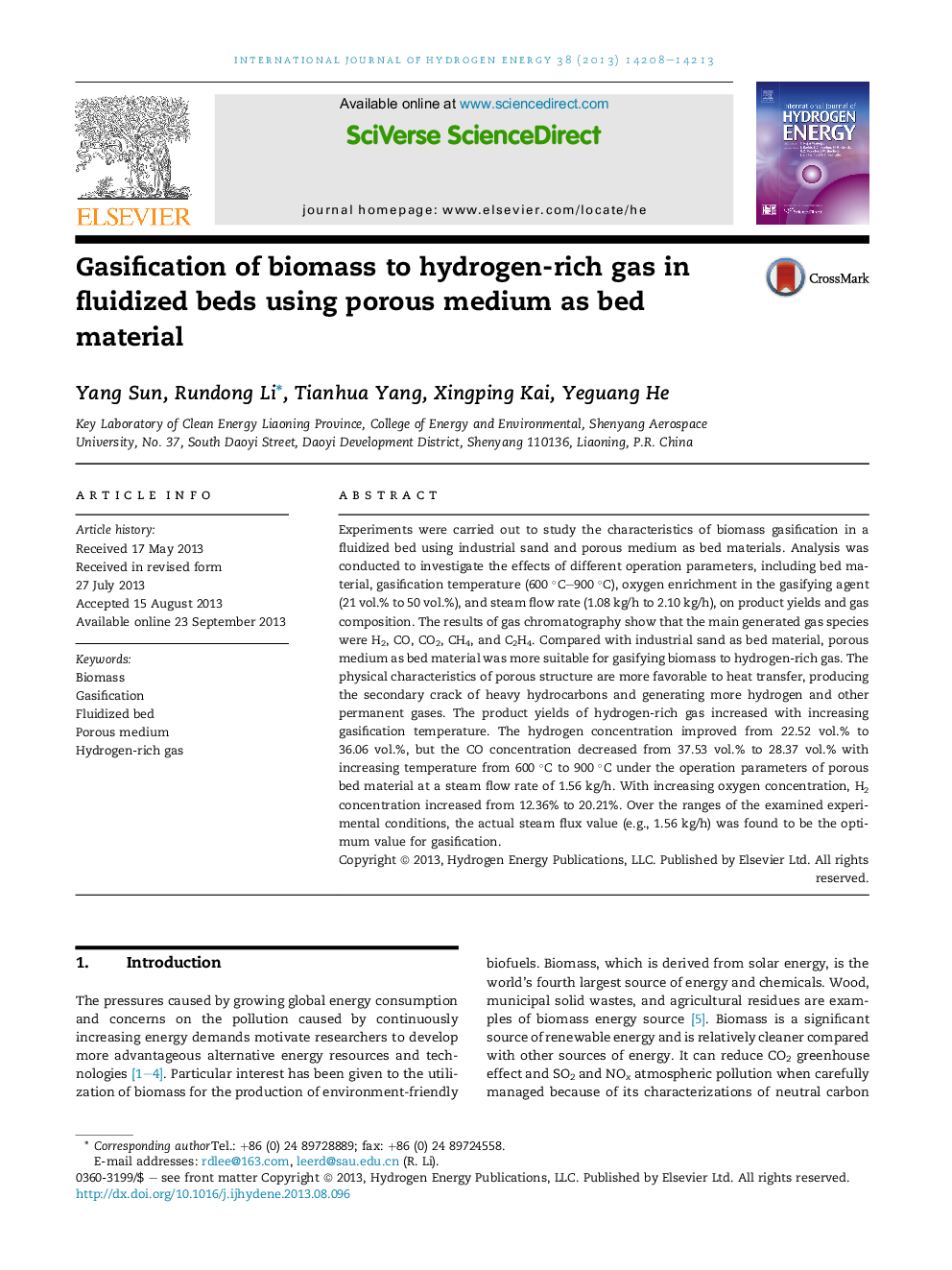| Article ID | Journal | Published Year | Pages | File Type |
|---|---|---|---|---|
| 1281380 | International Journal of Hydrogen Energy | 2013 | 6 Pages |
•Fluidized bed gasification was studied using porous medium as the bed material.•The porous structure of bed materials is favorable to generating hydrogen.•H2 concentration improved from 22.52 vol.% at 600 °C to 36.06 vol.% at 900 °C.•The optimized steam flow rate was 1.56 kg/h.
Experiments were carried out to study the characteristics of biomass gasification in a fluidized bed using industrial sand and porous medium as bed materials. Analysis was conducted to investigate the effects of different operation parameters, including bed material, gasification temperature (600 °C–900 °C), oxygen enrichment in the gasifying agent (21 vol.% to 50 vol.%), and steam flow rate (1.08 kg/h to 2.10 kg/h), on product yields and gas composition. The results of gas chromatography show that the main generated gas species were H2, CO, CO2, CH4, and C2H4. Compared with industrial sand as bed material, porous medium as bed material was more suitable for gasifying biomass to hydrogen-rich gas. The physical characteristics of porous structure are more favorable to heat transfer, producing the secondary crack of heavy hydrocarbons and generating more hydrogen and other permanent gases. The product yields of hydrogen-rich gas increased with increasing gasification temperature. The hydrogen concentration improved from 22.52 vol.% to 36.06 vol.%, but the CO concentration decreased from 37.53 vol.% to 28.37 vol.% with increasing temperature from 600 °C to 900 °C under the operation parameters of porous bed material at a steam flow rate of 1.56 kg/h. With increasing oxygen concentration, H2 concentration increased from 12.36% to 20.21%. Over the ranges of the examined experimental conditions, the actual steam flux value (e.g., 1.56 kg/h) was found to be the optimum value for gasification.
